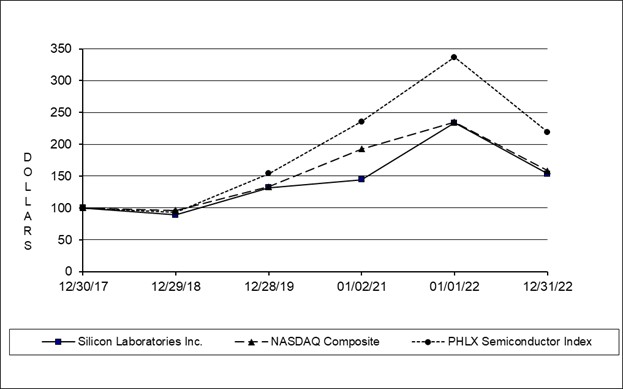In addition, the COVID-19 pandemic has caused further global economic uncertainty. Any future impacts due to COVID-19 or other public health crises, whether as a result of a resurgence of infection rates or the spread of new variants or viruses, is uncertain and could include disruptions to the business of our customers and suppliers, which could impact our business and operating results in the future.
Competition within the numerous markets we target may reduce sales of our products and reduce our market share
The markets for semiconductors in general, and for mixed-signal products in particular, are intensely competitive. We expect that the market for our products will continually evolve and will be subject to rapid technological change. For example, new products and disruptive technologies are being developed, and companies with which we compete have implemented artificial intelligence strategies for products and service offerings. This rapid pace of technological change can create opportunities for our competitors and harm our competitiveness in the market if our products do not evolve or we are unable to effectively keep up with such changes. In addition, as we target and supply products to numerous markets and applications, we face competition from a relatively large number of competitors. We compete with Broadcom, Espressif, Infineon, MediaTek, Microchip, Nordic Semiconductor, NXP, Qualcomm, Renesas, STMicroelectronics, Synaptics, Telink, Texas Instruments and others. We expect to face competition in the future from our current competitors, other manufacturers and designers of semiconductors, and start-up semiconductor design companies. As the markets for communications products grow, we also may face competition from traditional communications device companies. These companies may enter the mixed-signal semiconductor market by introducing their own products or by entering into strategic relationships with or acquiring other existing providers of semiconductor products. In addition, large companies may restructure their operations to create separate companies or may acquire new businesses that are focused on providing the types of products we produce or acquire our customers.
We may be the victim of business disruptions and security breaches, including cyber-attacks, which could lead to liability or could damage our reputation and financial results
Information technology system and/or network disruptions, regardless of the cause, but including acts of sabotage, error, or other actions, could harm the company’s operations. Failure to effectively prevent, detect, and recover from security breaches, including cyber-attacks, could result in the misuse of company assets, disruption to the company, diversion of management resources, regulatory inquiries, legal claims or proceedings, reputational damage, loss of sales and other costs to the company. We routinely face attacks that attempt to breach our security protocols, gain access to or disrupt our computerized systems or steal proprietary company, customer, partner or employee information. These attacks are sometimes successful. These attacks may be due to security breaches, employee error, theft, malfeasance, phishing schemes, ransomware, faulty password or data security management, or other irregularities. The theft, loss, destruction, unavailability or misuse of personal or business data collected, used, stored or transferred by us to run our business could result in increased security costs or costs related to defending legal claims. Industrial espionage, theft or loss of our intellectual property data could lead to counterfeit products or harm the competitive position of our products and services. Costs to implement, test and maintain measures to promote compliance with applicable privacy and data security laws as well as to protect the overall security of our system have been and are expected to continue to be significant. While we have dedicated resources to privacy and security incident response capabilities, our response process may not be adequate, may fail to accurately assess the severity of an incident, may not be fast enough to prevent or limit harm, or may fail to sufficiently remediate an incident. Attempted or successful attacks against our products and services could damage our reputation with customers or users and reduce demand for our products and services.
Additionally, there is an increased risk that we may experience cybersecurity-related events such as phishing attacks and other security challenges as a result of hybrid working arrangements and employees and our service providers working remotely.
In addition, the risk of cyber-attacks has increased in connection with the conflict between Russia and Ukraine and in the Middle East. In light of those and other geopolitical events, nation-state actors or their supporters may launch retaliatory cyber-attacks, and may attempt to cause supply chain and other third-party service provider disruptions, or take other geopolitically motivated retaliatory actions that may disrupt our business operations, result in data compromise, or both. Nation-state actors have in the past carried out, and may in the future carry out, cyber-attacks to achieve their aims and goals, which may include espionage, information operations, monetary gain, ransomware, disruption, and destruction. In 2022, the U.S. Cybersecurity and Infrastructure Security Agency issued a “Shields Up” alert for American organizations noting the potential for Russia’s cyber-attacks on Ukrainian government and critical infrastructure organizations to impact organizations both within and beyond the United States, particularly in the wake of sanctions imposed by the United States and its allies. These circumstances increase the likelihood of cyber-attacks and/or security breaches.
